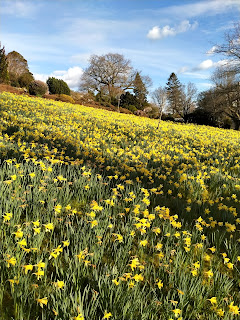Lenten Roses, Helleborus x hybridudus for Easter

With the Easter Holidays fast approaching it seems appropriate to write about the Lenten Rose or to use their proper name Helleborus x hybridus, a plant that looks good from January to May. Hellebores are easy to grown and undemanding. The foliage is evergreen and bold. Some of the new hybrids have marbled leaves that look as gorgeous as the flower. When the seed sets the sepals are beautiful, slowly turning green. Hellebores tolerate full sun to almost full shade. The colours of their sepals are varied, apricot, damson, grey, crimson, soft green, black and white. Most Hellebores have downward facing flowers that protect the pollen from rain sheltering the insects that feed on them. Bees love hellebores their colours, spots and stripes. Double or single these pollen rich flowers are the first to attract bumble bees in winter. Hellebores thrive in rich, moisture-retentive soil but are not lovers of boggy conditions. The plants lend themselves to informal pl
